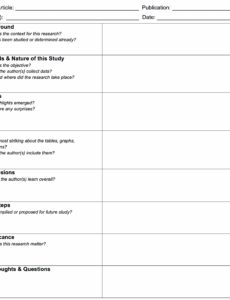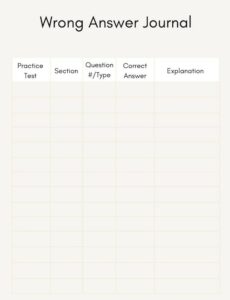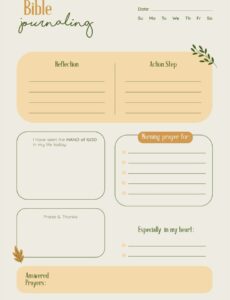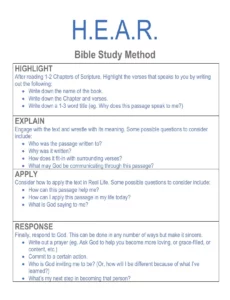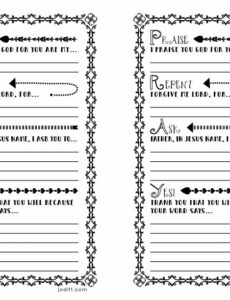Ever feel overwhelmed by your daily tasks and never-ending errands? You’re not alone. In our busy lives, keeping track of everything can feel like a Herculean effort. That’s where a fantastic system like the bullet journal comes in, offering a flexible yet structured way to manage your life. But what if you could streamline it even further, specifically for your daily or weekly tasks?
Imagine having a dedicated space that not only lists what you need to do but also helps you prioritize, track progress, and feel a sense of accomplishment. That’s the power of a well-designed to do list bullet journal template. It takes the core principles of bullet journaling and hones them for ultimate task management, turning your journal into an indispensable productivity tool.
Designing Your Perfect To Do List Bullet Journal Template
Creating your ideal to do list bullet journal template is all about personalization. The beauty of bullet journaling is its adaptability; there’s no one-size-fits-all solution, and that’s perfectly okay. What works for one person might not work for another, so think about your own needs, habits, and what kind of visual organization helps you most. Do you prefer a sprawling weekly spread or a focused daily page? Understanding your workflow is the first step.
Every effective to-do list needs a few fundamental elements: a clear space for your tasks, a way to mark them as complete, and often, a date or timeframe. Beyond these basics, you can start to add layers of functionality. Consider sections for urgent items, future tasks, or even specific categories like work, personal, or home. The goal is to make it intuitive and easy to use at a glance.
Let’s explore a couple of common layout ideas that you can adapt. Remember, these are just starting points, designed to spark your own creativity. Don’t be afraid to mix and match elements to find what truly resonates with your planning style. The best template is the one you actually use consistently.

Minimalist Daily Layout
For those who thrive on daily focus, a simple daily layout is incredibly effective. It keeps distractions at bay and allows you to concentrate on the tasks at hand for that specific day. This template is perfect for ensuring you don’t get lost in a sea of future commitments.
- Date prominently displayed at the top
- A small section for 1-3 top priorities for the day
- A main task list using simple bullet points or checkboxes
- A small space for notes or reflections at the bottom
Weekly Spread for Deeper Planning
If you prefer to see your entire week at a glance and allocate tasks across several days, a weekly spread might be your go-to. This allows for better long-term planning and ensures that weekly goals are broken down into manageable daily chunks. It’s excellent for balancing various projects and appointments.
- Sections for each day of the week (Monday through Sunday)
- A dedicated area for the week’s overarching goals or top three priorities
- Space for important appointments or events
- A small “Next Week” or “Future Log” section for tasks that aren’t for the current week
Experimentation is key here. Try out a few different layouts for a week or two each. Pay attention to what feels natural, what helps you get things done, and what you find yourself wanting to return to. Your perfect to do list bullet journal template will evolve as your needs change.
Tips and Tricks for Maximizing Your To Do List Bullet Journal Template
Having a well-designed to do list bullet journal template is a fantastic start, but truly mastering it means integrating effective habits into your routine. It’s not just about what you put on the page, but how you interact with it daily. Consistency is perhaps the most powerful tool in your bullet journaling arsenal, transforming a simple template into a dynamic productivity system.
One of the core principles of bullet journaling is regular review and migration. At the end of each day or week, take a few minutes to look over your tasks. What was completed? What wasn’t? Unfinished tasks aren’t failures; they’re opportunities to re-evaluate. Migrate them to the next day or week if they’re still important, or cross them off if they’re no longer relevant. This process keeps your lists fresh and prevents task bloat.
Don’t underestimate the power of simple visual cues within your template. While you might not want a complex legend, a few consistent symbols can make a huge difference. For example, a simple dot for a task, a circle for an event, and a dash for a note are classic bullet journal indicators. You can then modify these: an ‘X’ over a dot for a completed task, or an arrow for a migrated task. This minimalist approach maintains clarity without being overwhelming.
- Use a consistent symbol system: a simple dot for a task, a circle for an event, a dash for a note.
- Mark completed tasks clearly: an ‘X’ over a task dot signifies completion.
- Indicate migrated tasks: an arrow pointing right can show a task moved to a future date.
- Consider a subtle color code: use one color for work tasks and another for personal tasks to quickly distinguish them.
Remember, your bullet journal is a living document. Your needs will change, and your to do list bullet journal template should adapt with them. Don’t be afraid to iterate, refine, and even completely overhaul your template if it’s no longer serving you. The most effective system is the one that evolves alongside your life, continually supporting your goals and helping you achieve more with less stress.
Embracing a tailored to do list bullet journal template is more than just organizing tasks; it’s about gaining clarity, reducing mental clutter, and taking intentional steps towards your goals. It empowers you to be proactive rather than reactive, giving you a clear roadmap for your days and weeks. Start simple, be consistent, and watch how this personalized system transforms your productivity and peace of mind.
So, grab your journal, a pen, and take the first step towards a more organized and fulfilling life. Whether you choose a minimalist daily spread or a detailed weekly layout, the most important thing is to begin. The journey of effective task management is a continuous one, and your bullet journal will be your steadfast companion every step of the way, helping you celebrate small victories and tackle big challenges.
